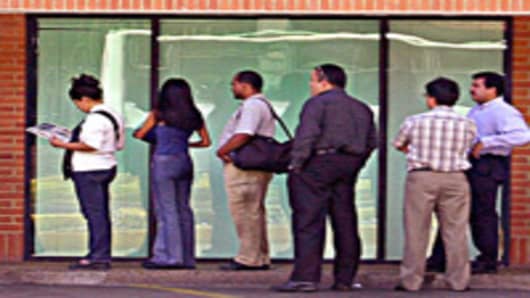New applications for U.S. unemployment benefits fell by 22,000 last week, but the number of workers remaining on jobless aid rose to its highest in more than two years, government data on Thursday showed, pointing to a weakening labor market as the economy slows.
The number of workers filing first-time claims for state jobless aid fell to a seasonally adjusted 356,000 in the weekended Feb. 2, from an upwardly revised 378,000 for the previous week, the Labor Department said.
The data increased investors' worries about the economy and reinforced the expectation of further aggressive interest rate cuts from the Federal Reserve.
"Claims have now reverted to their prior trend, and we expect them to rise further over the next few months in the wake of the sharp slowing in growth," said Ian Shepherdson, chief U.S. economist for High Frequency Economics in Valhalla, New York.
"In this environment, simply cutting back on hiring will not be enough for companies to maintain earnings as demand slows; jobs will have to be cut too," Shepherdson said.
Wall Street economists were expecting a bigger drop in new claims to 340,000 from the originally reported 375,000 for the week ended Jan. 26.
"We are having a lot of trouble in the labor market," said Lindsey Piegza, market analyst for FTN Financial in New York.
"Generally, a 350,000 to 375,000 range is a recession warning zone, and we have to be there for about a month."
The sharp jump in claims the previous week was skewed by the holiday-shortened workweek due to the Martin Luther King, Jr. federal holiday, a Labor Department official said.
In a sign that the long-term jobless continue to struggle to find work, the number of people remaining on benefit rolls after drawing an initial week of aid rose hit its highest since October 2005 in the aftermath of Hurricane Katrina.
These continued claims rose by 75,000 to 2.79 million in the week to Jan. 26, the latest period such figures were available. Economists had forecast continued claims at 2.73 million.
The four-week moving average, considered a more reliable predictor of labor market trends, rose for the second straight week, climbing to 335,000 from 326,500 the prior week..


